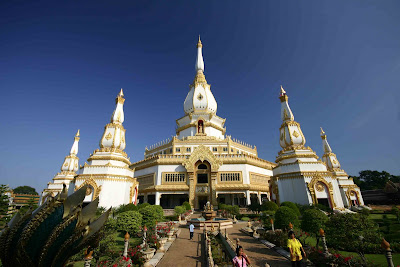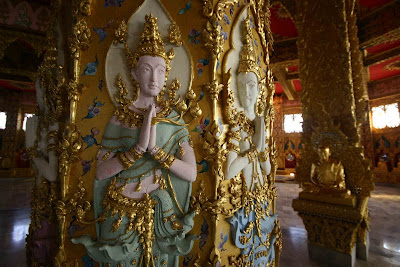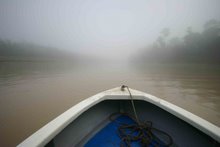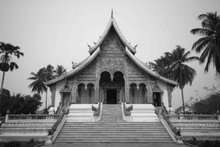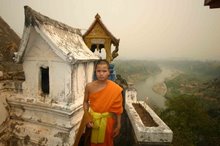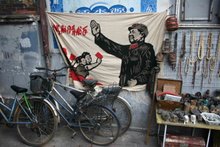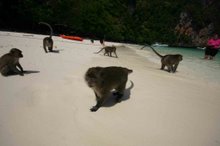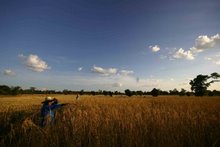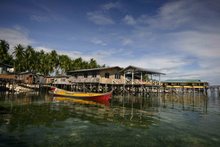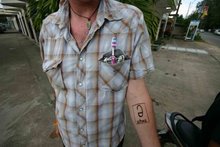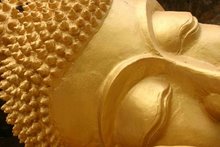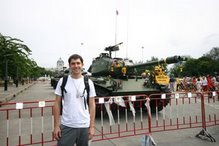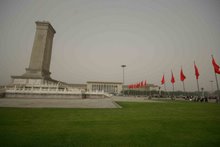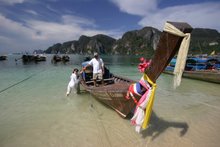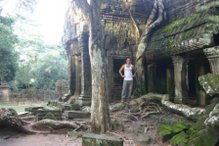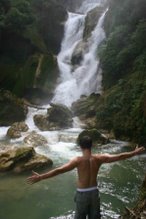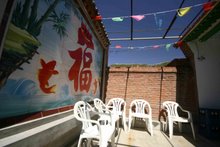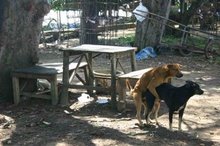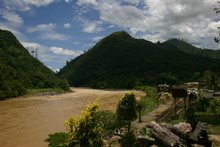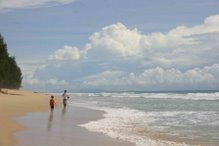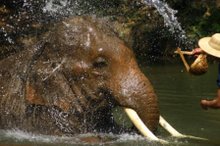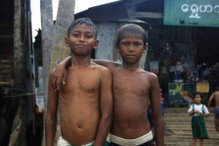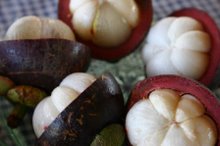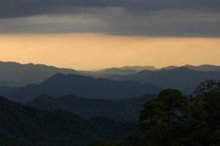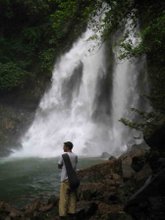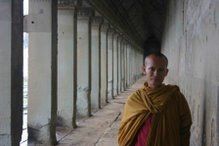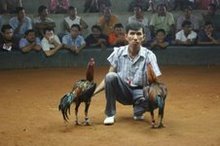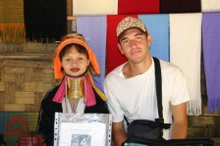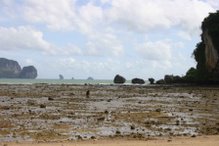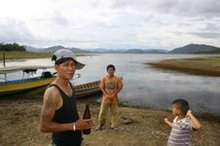 At first my students didn’t recognize who I was, after I returned to school after rushing home to change into a long sleeve shirt, cargo shorts, hiking shoes and my Tigers ball cap. A teacher in clothing more casual than the student’s uniforms, the kids didn’t know what to think of me. Their best clothing, when the kids realized who I was their first question was, “Teacher, where you going?”
At first my students didn’t recognize who I was, after I returned to school after rushing home to change into a long sleeve shirt, cargo shorts, hiking shoes and my Tigers ball cap. A teacher in clothing more casual than the student’s uniforms, the kids didn’t know what to think of me. Their best clothing, when the kids realized who I was their first question was, “Teacher, where you going?”
 “Geeaow kao,” I answered, shocking them again. Though Thais don’t have sarcasm, they assumed I had to be lying or joking: Why would a falang go to cut rice?
“Geeaow kao,” I answered, shocking them again. Though Thais don’t have sarcasm, they assumed I had to be lying or joking: Why would a falang go to cut rice?
 Pee Nok arrived on her motorbike moments later, traditional farming hat in hand, and we drove out the main gates of campus and out of town.
Pee Nok arrived on her motorbike moments later, traditional farming hat in hand, and we drove out the main gates of campus and out of town.
 At 4:00 in the afternoon it begins to cool off just slightly, as the sun starts to hang low in the sky. Only several kilometers from school, we turned off the main road onto a dirt path, Pee Nok leading us through a village of familiar smiles. At several of the homes, mothers and grandmothers rested on small decks under the shade of large trees, watching their kids brave the last of the day’s heat, running around with the chickens. We wound through the village, then through rice fields until we come to a large tree under which two motorbikes are already parked. We left ours with them, and Pee Nok gave me the traditional farming hat and a bottle of water.
At 4:00 in the afternoon it begins to cool off just slightly, as the sun starts to hang low in the sky. Only several kilometers from school, we turned off the main road onto a dirt path, Pee Nok leading us through a village of familiar smiles. At several of the homes, mothers and grandmothers rested on small decks under the shade of large trees, watching their kids brave the last of the day’s heat, running around with the chickens. We wound through the village, then through rice fields until we come to a large tree under which two motorbikes are already parked. We left ours with them, and Pee Nok gave me the traditional farming hat and a bottle of water.

Following Pee Nok’s instructions, I downed the water as we walked on the raised path between the already harvested rice fields back to where three fully clothed people were cutting rice. Everything covered except their eyes, they were quickly moving down the field by hand.
One of the men took break to come over and teach me how to cut rice. He handed me a small scythe and then we walked over to the grains for practice. He demonstrated first, collecting the stalks with the scythe, then grabbing them with his hand, then ripping the knife towards himself, cutting it all loose. He did this several times slowly, making it look very easy.


At first, with a little help from the man, I took to it quite easily. The actual cutting was easy—the blade was sharp and the rice isn’t exactly thick. But collecting it, slicing and repeating—quickly—was no easy task. As I watched the Thais do it, they were quick, efficient, and swiped, cut, repeated very quickly. I constantly got myself tangled in other weeds, cut the rice unevenly, and shook half the grains onto the ground being careless in handling it.

A half an hour into the tiresome work, I started to get the hang of it. I still wasn't as quick as the Thais, but I started to help them out more than I slowed them down. I collected handfuls of rice and then, as I was taught, bent over the already-cut grass, and laid down the rice atop to be recolllected later. For the time being I was having fun, but hunched over in the hot Thai sun, this was not work I coudl do every day. The novelty of working in the field soon wore off and the monotony set in. Staring at handful of rice after handful of rice, I felt like I was making little progress. But soon I looked back, and the four of us had harvested a full field. For all my (secret) boredom, I felt a sense of accomplishment after finishing an entire field.

The rice cut, it was now time to collect it and haul it over to one central spot in the field, under the shade of a large tree. Tying the bundles of rice together, they carried them over to where they had a bamboo pole set up. They set the rice on each side of the pole and then when full, carried it off on their shoulder. Convinced I could help here better than I could with the scythe in my hand, I attempted to carry the bamboo.

Obviously absent of any padding, the bamboo was not comfortable resting on my shoulder. It was also far heavier than I had expected. Who knew rice could weigh so much? Once hoisted up though, I refused to put the rice back down until it was where they wanted it. Constantly struggle to keep my balance and not trip on the way, I stumbled across the field to the center of the field. My shoulder aching, I threw the rice on the ground and wondered how they were able to make it look so easy. As is visible in the picture above, some ladies chew on beetlenut, a strange natural drug around here. It gives an energetic, addictive high perhaps similar to cocaine. Many old ladies chew it incessantly, making their gums and lips messy with the red juice from the nut. High as a kite, they hardly mind and continue their back breaking work.

Even more difficult is harvesting a rice field like the one above here, where the wind has blown the crop over on its side. Here they must bend over even farther and basically harvest it right off the ground. Either way, its a pain-staking process that here in Isaan, is still only done by hand. For all those times I have been sick of rice and have been quick to throw a bowl of it aside, I know eat every last grain off my plate, understanding the trouble that was gone through to harvest it.





































